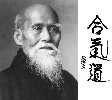

| Navigation: |
| Home About Aikido About TAA Join The TAA Contact Dojo Directory Events Articles Links Dojo News |
| Dojo-cho Area: |
|
Home |

Jan. 27, 2002
Evaluating A Dojo
Bill Witt, Shihan, Takemusu Aikido Association:
Over the years one of the most commonly asked questions by prospective students is, "How do I evaluate a dojo?" To someone who has no experience in martial arts this is a somewhat intimidating task.
For me the task was easy. I was in Tokyo and the first person I saw, when I walked in the dojo, was O-Sensei. My reasoning for joining was that it is not often in life that one is able to associate with the founder of a movement. I also figured that the quality of training had to be high. These were two excellent criteria to make this choice, and I was more than rewarded on both counts.
Years later when I was teaching, people would come into the dojo and ask me the very same question. My experience was so unique that it was difficult to answer someone who was sincerely trying to find a way of comparing one dojo versus another, since our situations were so different.
One night after practice several of us were sitting with my Sensei and we asked him this very question. Without hesitating, he answered that there were three things to look for:
1. Do the Sensei's techniques work?
This is difficult to evaluate, if you have no experience in martial arts. However, someone who has trained a bit in any martial art should be able to see if basic principles of movement and balance are being applied.
2. Does it look like the students are enjoying themselves?
It is important to train with a joyful spirit. Those of us with years of experience appreciate the opportunity to train together. Is the sensei enjoying himself in class? Conversely, do the trainees seem grim or afraid? If you think of your own educational experiences, the teachers you responded to most made your learning fun.
3. Are the newer students being cared for?
This is where the observation becomes personal. Notice if the senior students are training with the newer students, because this will be your situation should you join. Are the senior students taking care of the junior students by training in a supportive and safe manner? Does the sensei give newer students personal attention? Are beginners segregated out into a special class where they train only with other beginners? By integrating with senior students in a regular class, the beginner learns more quickly, gets personal coaching, and experiences the enthusiasm that Aikido practice generates.
That evening as Sensei expanded on each question, it became clear what we had to do as future senseis to welcome people into our dojos. From then on we approached our own training in the dojo differently. We were not just learning techniques anymore. We were noticing now how Sensei taught in the dojo, which was something we took for granted before. He made us train with the newer people to help them and take care of them. His answers had been there all along, but now we were aware of them.
